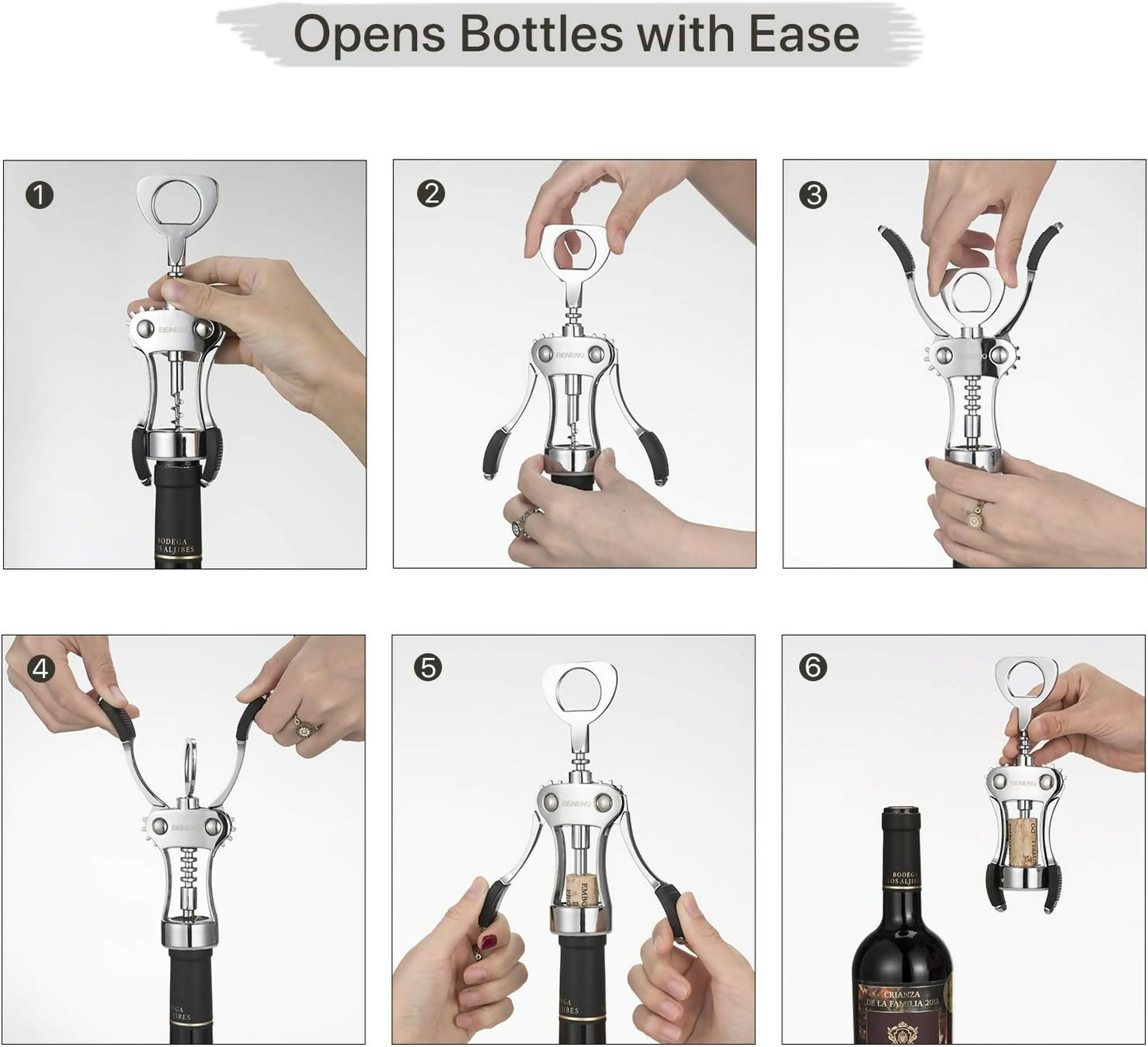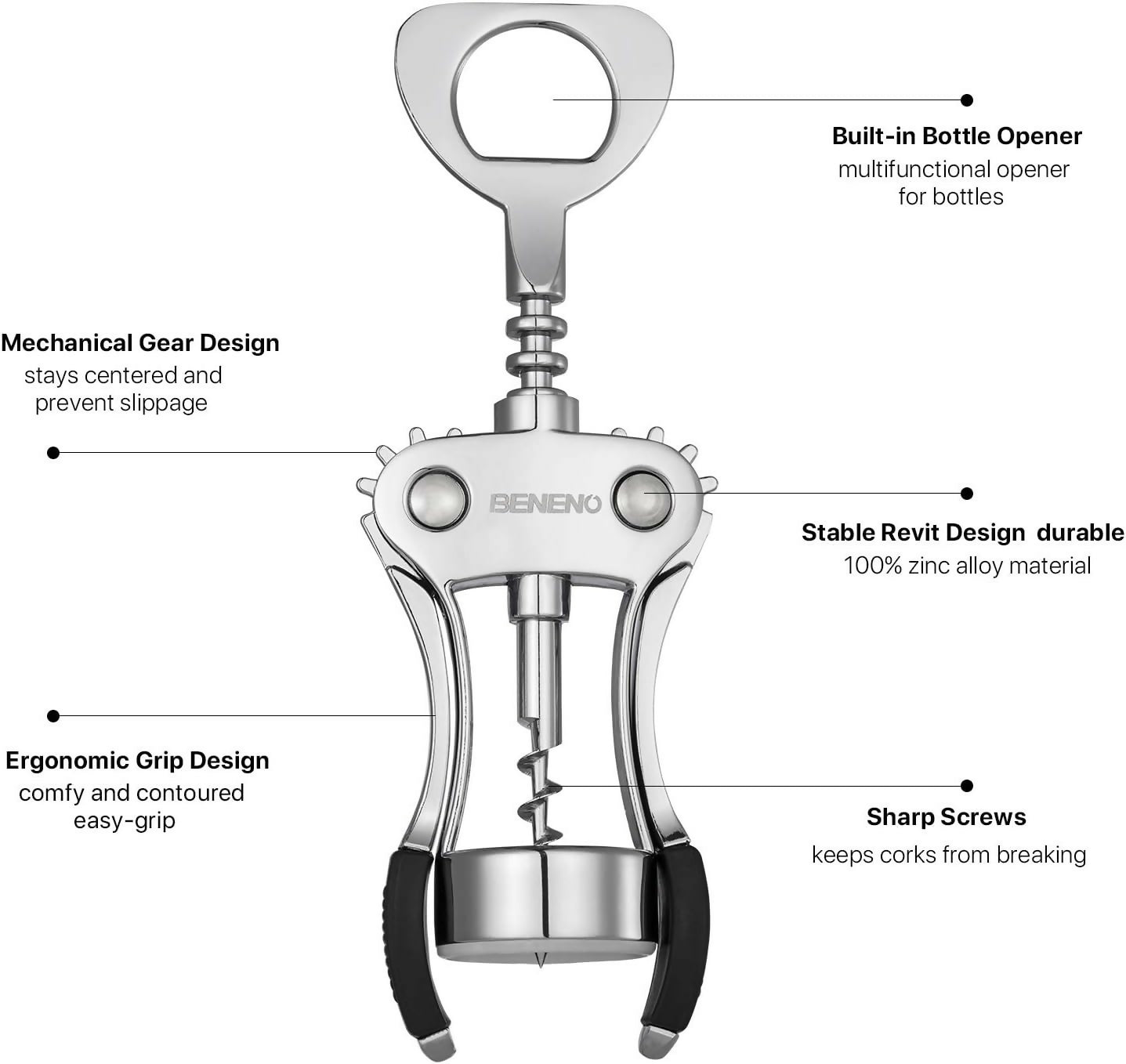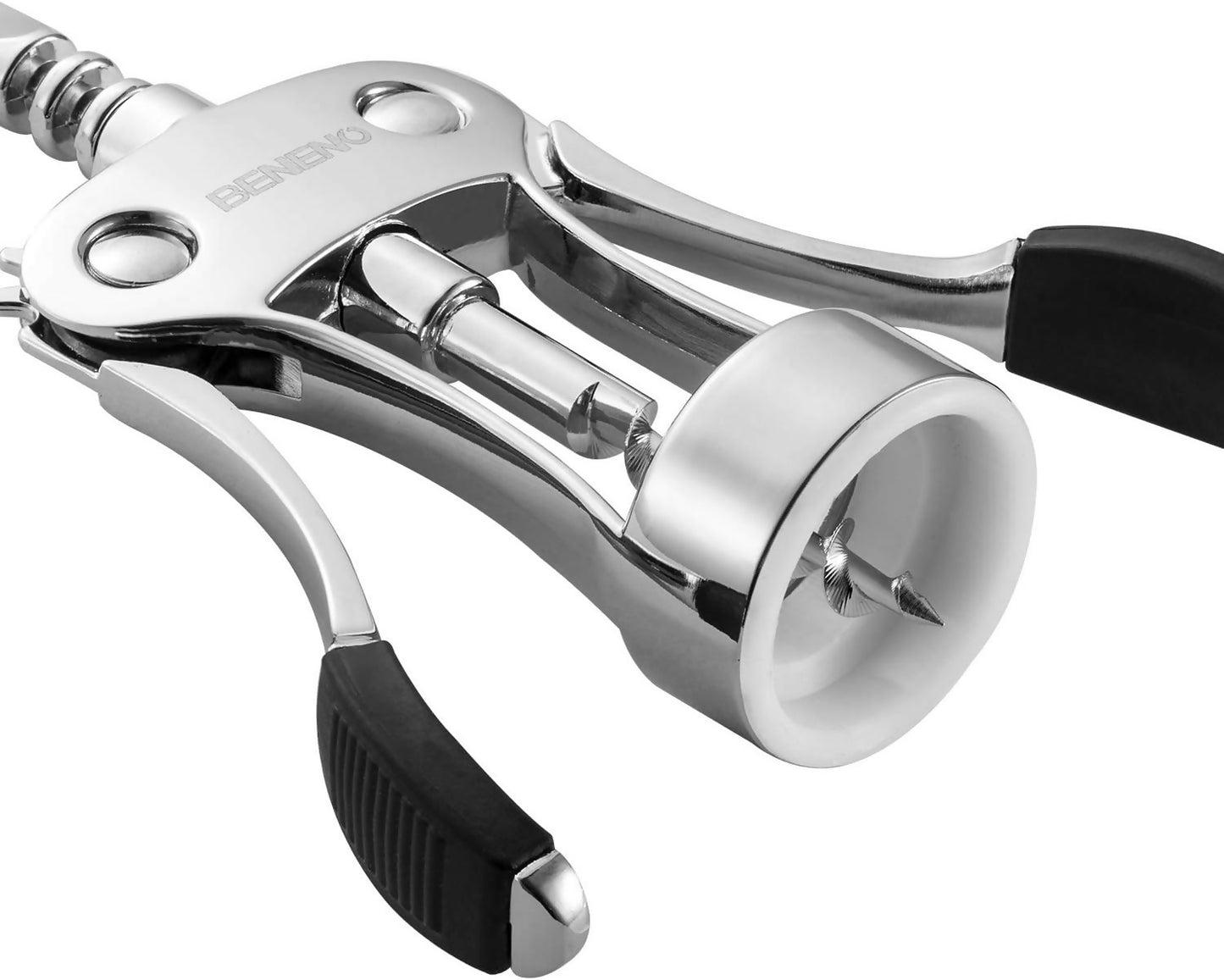Jayvie
Wine Opener
Wine Opener
Couldn't load pickup availability
Types of Wine Openers:
-
Waiter's Corkscrew (Sommelier’s Knife):
- This is a classic and compact tool often used by professionals. It usually consists of a corkscrew, a small knife for cutting the foil, and a lever for pulling out the cork.
- Pros: Small, portable, and affordable. Offers precision and control.
- Cons: Requires some practice to use smoothly, especially for beginners.
-
Winged Corkscrew:
- A popular choice for casual wine drinkers, this opener has two "wings" or levers that rise as you screw the spiral into the cork. You then push the wings down to extract the cork.
- Pros: Easy to use and provides good leverage for removing corks.
- Cons: Can sometimes damage fragile corks, and it may take up more space than other compact designs.
-
Electric Wine Opener:
- An electric corkscrew automatically removes the cork at the push of a button. It’s battery-powered or rechargeable and usually comes with a charging base.
- Pros: Effortless and convenient, especially for people with limited hand strength or those who open wine bottles frequently.
- Cons: Requires batteries or charging and can be more expensive than manual options.
-
Lever/Pump Action Corkscrew:
- A lever-style wine opener, also known as a "rabbit" opener, uses a clamp to hold the bottle steady while a lever drives the corkscrew into the cork. Another motion of the lever pulls the cork out.
- Pros: Quick and easy, requiring minimal effort. Ideal for those who want to open bottles with ease.
- Cons: Bulkier and more expensive than basic corkscrews.
-
Twist and Pull Corkscrew:
- This basic type features a simple helix (the metal spiral part) that you twist into the cork and then manually pull out.
- Pros: Simple, affordable, and widely available.
- Cons: Requires strength and skill, especially with tightly seated corks.
-
Air Pressure Pump Wine Opener:
- This type uses air pressure to remove the cork. You insert a needle through the cork and pump air into the bottle, which forces the cork out.
- Pros: No twisting or pulling required, and it works well on natural and synthetic corks.
- Cons: Not ideal for older or brittle corks, which can crumble under pressure.
-
Ah-So Cork Puller:
- This opener uses two prongs that you wiggle between the cork and the bottle to remove the cork without piercing it. It’s often used for opening bottles with older or fragile corks.
- Pros: Great for delicate or older corks that might break with traditional corkscrews. Doesn’t damage the cork.
- Cons: Requires practice to master and may be harder for beginners to use.
Features to Consider:
Ease of Use: Some openers, like the lever or electric types, are easier to use than manual ones. If you have limited hand strength or open bottles often, these might be better choices.
Durability: Look for openers made from high-quality materials like stainless steel or durable plastic. Metal parts should resist bending or breaking, especially for heavy use.
Portability: If you’re planning to take the wine opener to parties, picnics, or on travels, a compact and portable model like a waiter's corkscrew is ideal.
Aesthetics: Wine openers come in many stylish designs and finishes, including wood, stainless steel, and even gold-plated or custom designs. Consider an opener that matches your style or home decor.
Multi-Functionality: Some openers come with additional features like a built-in bottle opener, a foil cutter, or even a vacuum pump to reseal bottles after opening.
Compatibility with Synthetic Corks: Some corkscrews work better with synthetic corks, which are more durable and don’t crumble as easily. Be sure to choose one that can handle synthetic corks if needed.
Popular Wine Opener Brands:
- Rabbit: Known for their lever-style openers, Rabbit offers a range of high-quality wine tools that are easy to use.
- Coravin: A high-end option that allows you to pour wine without removing the cork, keeping the wine fresh longer.
- Cuisinart: Offers reliable electric wine openers with sleek designs.
- Le Creuset: Known for their premium lever wine openers and classic waiter’s corkscrews.
Tips for Using a Wine Opener:
- Cut the Foil Properly: Use a foil cutter or the small blade on a corkscrew to cut below the lip of the bottle for a clean look and easier cork extraction.
- Insert the Corkscrew Straight: This ensures the cork won’t break or crumble. Be sure to twist the corkscrew in fully for better leverage.
- Twist, Don’t Pull: When using a manual corkscrew, focus on twisting rather than pulling too hard to prevent breaking the cork.
Share






